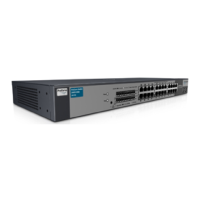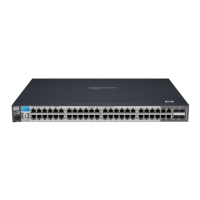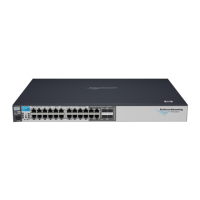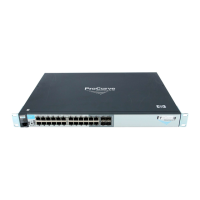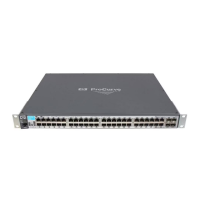11
Installing the Switch
Note Each of the four mini-GBIC slots is shared with the associated 10/100/
1000Base-T RJ-45 port. If a mini-GBIC is installed in a slot, the associated RJ-
45 port is disabled.
If you have any mini-GBICs installed in the switch, the type of network
connections you need to use depends on the type of mini-GBICs you have
installed.
When a network cable from an active network device is connected to the port,
the port LED for that port should go on. If the port LED does not go on when
the network cable is connected to the port, see “Diagnosing with the LEDs”
on page 15.
6. Connect a Console to the Switch
The console can be accessed through these methods:
■ Out-of-band: The switch comes with a console cable for connecting a PC
or VT-100 terminal directly to the Console port on the front of the switch.
The console cable is a DB-9 to RJ45 connector.
■ In-Band: Access the console using Telnet from a PC or UNIX station on
the network, and a VT-100 terminal emulator. This method requires that
you first configure the switch with an IP address and subnet mask by using
either out-of-band console access or through DHCP/Bootp.
The Switch can simultaneously support one out-of-band console session
through the Console Port and one in-band Telnet console session.
Console Terminal Configuration
To connect a console to the switch, configure the PC terminal emulator as a
DEC VT-100 (ANSI) terminal or use a VT-100 terminal, and configure either
one to operate with these settings:
• any baud rate from 1200 to 115200 (the switch senses the speed)
• 8 data bits, 1 stop bit, no parity, and flow control set to Xon/Xoff
• For the Windows Terminal program, also disable (uncheck) the “Use
Function, Arrow, and C
trl Keys for Windows” option
• For the Hilgraeve HyperTerminal program, select the “Terminal keys”
option for the “Function, arrow, and ctrl keys act as” parameter.
